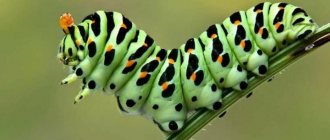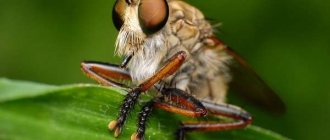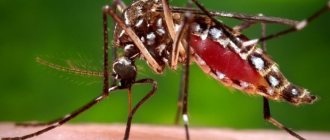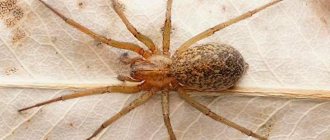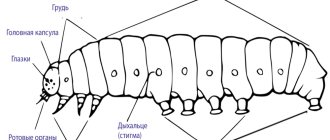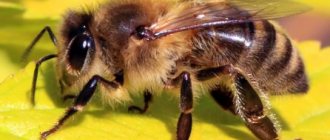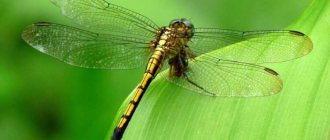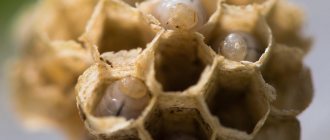Total number
The order Lepidoptera undoubtedly stands out among taxa of a similar rank in terms of species diversity. Lepidoptera are one of the largest groups of insects, including, as of August 2013, 158,570 species, including 147 fossil taxa. It is estimated that up to 100,000 species remain still unknown to science and, thus, the total number of lepidopteran species existing on the planet can be estimated at approximately 200,000 - 225,000 species. There are 2,166 genera and 8,879 species found in Russia.
Lepidoptera are very diverse, and most of their species are poorly studied. Some of the described species are known from finds from a single locality or even from a single specimen. A true estimate of the total number of species in existence will never be known because many species became extinct before they were discovered. The taxonomy of butterflies presented in various works reflects the different views of their authors and is, without a doubt, debatable.
There are disputes regarding the systematic position or the need to maintain the status of certain subspecies or species. DNA studies suggest that some of the currently known species must be separated. A well-known example is where the seemingly identical Colias alfacariensis and Colias hyale , previously thought to be one species, were split into two after significant differences in the structure of their caterpillars and pupae were discovered.
Butterfly - description. The structure and appearance of butterflies.
- 35 facts about giraffes
- Animals of Crimea
- 36 facts about elephants
- Rodents
- 35 facts about foxes
- Animals of Brazil
The structure of the butterfly has two main sections: the body, protected by a hard chitinous shell, and the wings.
A butterfly is an insect whose body consists of:
- Head, inactively connected to the chest. The butterfly's head has a round shape with a slightly flattened occipital part. The round or oval convex eyes of the butterfly in the form of hemispheres, occupying most of the lateral surface of the head, have a complex facet structure. Butterflies have color vision and perceive moving objects better than stationary ones. In many species, additional simple parietal eyes are located behind the antennae. The structure of the oral apparatus depends on the species and can be of the sucking or gnawing type.
- The breast of a butterfly has a three-segment structure. The front part is significantly smaller than the middle and back part, where three pairs of legs are located, which have a structure characteristic of insects. On the shins of the butterfly's front legs there are spurs designed to maintain the hygiene of the antennae.
- The abdomen of a butterfly has the shape of an elongated cylinder, consisting of ten ring-shaped segments with spiracles located on them.
- The antennae of the butterfly are located on the border of the parietal and frontal parts of the head. They help butterflies navigate their surroundings by sensing air vibrations and various odors. The length and structure of the antennae depend on the species.
- Two pairs of butterfly wings , covered with flat scales of different shapes, have a membranous structure and are penetrated by transverse and longitudinal veins. The size of the hind wings can be the same as the front wings or significantly smaller than them. The pattern of butterfly wings varies from species to species and captivates with its beauty. In macro photography, the scales on the wings of butterflies are very clearly visible - they can have completely different shapes and colors.
The appearance and color of the butterfly’s wings serve not only for intraspecific sexual recognition, but also act as protective camouflage, allowing it to blend into its surroundings. Therefore, colors can be either monochrome or variegated with a complex pattern. The size of a butterfly, or better said, the wingspan of a butterfly, can range from 2 mm to 31 cm.
Lifespan
How long do butterflies live in nature and at home? The lifespan of a butterfly depends greatly on its species and the climate in which it lives. Usually the life of a butterfly is short, lasting from several days to several weeks. However, there are so-called long-lived butterflies that can live up to two years. But they can only live to such a respectable lifespan by the standards of a butterfly at home, since in nature butterflies have many enemies, few of them survive to old age.
Internal structure
Nervous system
Butterflies have a perfect nervous system and sensory organs, thanks to which they are perfectly oriented in their surroundings and quickly respond to danger signals. The nervous system, like that of all arthropods, consists of a peripharyngeal ring and a ventral nerve cord. In the head, as a result of the fusion of clusters of nerve cells, the brain is formed. This system controls all movements of the butterfly, except for such involuntary functions as blood circulation, digestion, and breathing. Researchers believe that these functions are controlled by the sympathetic nervous system.
Circulatory system
The circulatory system, like that of all arthropods, is not closed. Blood directly washes the internal organs and tissues while in the body cavity, transferring nutrients to them and carrying harmful waste products to the excretory organs. It does not participate in the transfer of oxygen and carbon dioxide, that is, in respiration. Its movement is ensured by the work of the heart - a longitudinal muscular tube located in the dorsal part above the intestines. The heart, pulsating rhythmically, drives blood to the head end of the body. The backflow of blood is prevented by the heart valves. When the heart expands, blood enters it from the back of the body through its side openings, which are equipped with valves that prevent blood from flowing back. In the body cavity, unlike the heart, blood flows from the front end to the back, and then, entering the heart as a result of its pulsation, it is again directed to the head.
Respiratory system and excretory system
The respiratory system is a dense network of branched internal tubes - tracheas, through which air, entering through the external spiracles, is delivered directly to all internal organs and tissues.
The excretory system is a bundle of thin tubes, the so-called Malpighian vessels, located in the body cavity. They are closed at the tops, and open at the bases into the intestines. Metabolic products are filtered out by the entire surface of the Malpighian vessels, and then inside the vessels they turn into crystals. Then they enter the intestinal cavity and, together with undigested food debris, are excreted from the body. Some harmful substances, especially poisons, accumulate and are isolated in the fat body.
Reproductive system
The female reproductive system consists of two ovaries, in which eggs are formed. The ovaries, passing into tubular oviducts, merge at their bases into a single unpaired oviduct, through which mature eggs are released. In the female reproductive system there is a spermatheca - a reservoir into which male sperm enter. Mature eggs can be fertilized by these sperm. The reproductive organs of the male are two testes that pass into the vas deferens, which unite into an unpaired ejaculatory duct, which serves to remove sperm.
Hearing organs
Butterflies hear through their abdomen, since their “ears” are located in the dimples on the sides of the third segment of the chest or the first segment of the abdomen.
The “ears” of butterflies are formed by a thin leathery membrane, which is stretched over a ring. Beneath the membrane are bubble-like tracheas, and nerves connect to them. When the sound wave reaches the butterfly, the membranes begin to vibrate. The tracheal vesicles pick up this vibration and transmit it along the nerves to the brain, which decides what to do.
Lifestyle of butterflies
Unlike other insects, such as beetles, butterflies can be called true aerial creatures. Very rarely they lack wings or have them in a rudimentary state; this only happens in females. Most butterflies fly a lot and quickly - during the day, at dusk or at night; Some butterflies, especially moths, fly only at certain hours. Many, such as hawkmoths (Sphingidae), eat in flight. Some butterflies are found in caves, not far from the entrance; only one butterfly, Acentropus niveas Olivier, is adapted to life in water. The predominant number of butterflies live in the warm season, from early spring to autumn; The laying of eggs also coincides with this time.
Butterfly food is liquid. Most butterflies feed on honey or nectar secreted by flowers. The death's head (Acherontia atropos L.) has such a great need for honey that it steals it from bee hives. Butterflies are also attracted to other plant secretions. For example, they very often visit herbs that secrete honey, and butterflies can always be found near open cuts on a tree, as well as other insects, since these cuts secrete sap on which they feed. Butterflies also readily extract juice from fruits, especially those previously gnawed by wasps: this makes it easier for them to access the juice.
In some butterflies, the proboscis is adapted for boring through leaves and fruits. A collector, inspecting fishing spots smeared with honey at night, knows how to use these tastes of butterflies: he adds a few drops of fruit ether to the bait, and in addition uses beer; Scoops especially love alcohol.
Like all other fully metamorphosed insects, a butterfly emerging from a pupa retains its size throughout its life. If specimens of larger and smaller sizes are found in the same species, then the reason for this is the different nutrition of the caterpillar; depending on this, during pupation it has a larger or smaller size, according to which the size of the butterfly’s body will be different, and the differences in the same species can be very significant. Often in some species there are dwarf forms, but otherwise completely normal. Differences in magnitude may be due to a specific area; for example, polychlorus (Vanessa polychloros L.) in Ireland is smaller than in Germany.
Stages of reproduction. Transformation of a caterpillar into a butterfly.
Among butterflies, there are very complex forms of courtship during the mating season, which are expressed in special flights and mating dances. And the mating process itself can last several hours. Moreover, females receive from the male not only sperm, but also the supply of micronutrients and proteins they need.
The life cycle of a butterfly consists of 4 stages:
Eggs
Like many other insects, a butterfly's life begins with an egg. Depending on the type of butterfly, they lay eggs on
leaves or branches of plants. Typically there can be up to 1000 round or cylindrical fertilized eggs at a time. The butterfly egg stage lasts 8-15 days.
Caterpillar
From the eggs of butterflies, caterpillars emerge that have a gnawing type of mouthparts, with which they can eat plant leaves, flowers and fruits. Caterpillars have special glands that produce a special substance that hardens when it comes into contact with air. This substance forms a strong silk thread, which over time will become a cocoon.
Doll
Over time, the caterpillars begin to pupate, and the third stage of the butterfly's life cycle begins.
This is what the pupation of a caterpillar, its transformation into a pupa, looks like. The pupa can be elongated cylindrical or round in shape.
Imago (adult, butterfly)
At the last stage, an adult butterfly emerges from the pupa.
This is what the transformation of a pupa into a butterfly looks like.
Classification and types of butterflies
The large order of Lepidoptera includes more than 158 thousand representatives. There are several classification systems for butterflies, quite complex and confusing, with constant changes occurring in them.
The most successful scheme is considered to be one that divides this detachment into four suborders:
- Primary toothed moths . These are small butterflies, the wingspan of which ranges from 4 to 15 mm, with a gnawing type mouthparts and antennae that reach a length of up to 75% of the size of the front wings. The family consists of 160 species of butterflies.
Typical representatives are:
- golden smallwing;
- marigold smallwing.
- Proboscis butterflies . The wingspan of these insects, covered with dark small scales with cream or black spots, does not exceed 25 mm. Until 1967, they were classified as primary toothed moths, with which this family has much in common.
The most famous butterflies from this suborder:
- flour moth – Asopia farinalis L.
- spruce cone moth – Dioryctrica abieteila.
- Heterobathmiidae, represented by one family Heterobathmiidae.
- Proboscis butterflies, making up the largest suborder, consisting of several dozen families, which include more than 150 thousand species of butterflies. The appearance and size of representatives of this suborder are very diverse.
Below are several families demonstrating the diversity of proboscis butterflies:
- Swallowtail family , represented by medium and large butterflies with a wingspan from 50 to 280 mm. The pattern on the wings of butterflies consists of black, red or blue spots of various shapes, clearly visible on a white or yellow background. The most famous of them are the swallowtail butterfly, the swallowtail "Glory of Bhutan", Queen Alexandra's birdwing and others.
- Family Nymphalidae , a characteristic feature of which is the absence of thickened veins on wide, angular wings with variegated colors and a variety of patterns. The wingspan of butterflies varies from 50 to 130 mm. Representatives of this family are: admiral butterfly, day peacock butterfly, urticaria butterfly, mourning butterfly, etc.
- The Hawkmoth family , represented by moths with narrow wings, the span of which does not exceed 13 cm and is distinguished by a characteristic pattern. The abdomen of these insects is thickened and fusiform. The most famous butterflies of this family are: the death's head hawk moth, the oleander hawk moth, and the poplar hawk moth.
- Family Noctuid moths , which includes more than 35,000 species of moths. The span of the furry wings, gray with a metallic tint, averages 35 mm. However, in South America, there is a species of butterfly called tisania agrippina with a wingspan of 31 cm or the atlas peacock eye, the size of which resembles a medium-sized bird.
Types of representatives
Science knows about 158 thousand representatives of various species of butterflies. Only runaways, this is one of the subspecies, is divided into several types, differing in appearance by a number of other features:
- Cabbage butterfly. A butterfly, the males of which are white with black dots, the females are bright yellow. The size is about 65 mm. They feed on plants.
- Lemongrass. The representative of this species is yellow in color, and the female is white-green. They are united by a red circle located in the center. The wings are made in a very unusual way, with imitation ends cut off with scissors. Its size is about 55 mm.
- White pea. An endangered species of the family. The outer sides of the wings are colored white and gray, while the inner sides are green, allowing her to blend in with the grass.
- Turnip white. It is similar to the cabbage butterfly, but differs in size, which is about 45 mm, and in the number of black spots on the wings. The male has 1 spot, and the female has 2.
- Greenfinch. It has a white color with dark spots and a green pattern; it feeds on cruciferous vegetables, in which it lays its eggs.
- White rapeseed. It is white in color with a yellow pattern and clearly visible veins. Is migratory. For the winter it flies to warmer climes, namely North Africa.
- Alpine whiteweed. It has a white-gray color. In males, the ends of the wings are painted black with white splashes.
- White euphema. It is white with a yellow tint and has a dark spot in the center. The lower wings are decorated with a green pattern. It is a steppe inhabitant.
- Hawthorn. The butterfly is white with clearly visible black veins. Its size is about 60 mm.
Cocoonworm family
Insects belonging to this family are large or medium in size with a large body that is covered with hairs. They are more like moths, their antennae have bristles, and their front wings are much larger than their hind wings. The main representatives include:
- The Siberian is medium in size, yellow-brown in color with a white spot in the center, but the color of the wings can vary from individual to individual and can be black. Uses tree needles for food and egg laying.
- Ringed. The size is about 40 mm. It has a yellow-brown color on the front wings with two dark stripes. The hind wings are a lighter color without stripes. It lays its eggs in the form of a ring, which is how it got its name. It is a tree pest.
- Pine. The butterfly is large (about 80 mm) with a color that resembles pine bark. Flies in the second half of July. Lives in pine forests.
They usually live in groups in trees. Some members of this family are pests.
Blueberry family
Five thousand species of this family are known in nature, some of which are on the verge of extinction and are listed in the Red Book. They are medium in size and bright in color, but depending on the species, the color may vary. A distinctive feature of bluebirds is the colored pattern on the lower wings in the form of eyes. They are not pests; on the contrary, they are beneficial in the form of repelling insect pests.
Bright pieds
Includes about 1,200 species, most of which live in the tropics. They range in size from medium to large and are brightly colored with a rainbow pattern. It is needed to warn that the insect is poisonous, and if life is threatened, it will defend itself by secreting a poisonous liquid that has a pungent odor. Among the main representatives are :
- Admiral. It has an average size of about 55 mm with a velvety surface and a bright color of white spots with a red stripe.
- Peacock eye. A large butterfly, up to 150 mm in size, with a bright red-brown color with an eye pattern at the corners of the wings. This pattern protects the insect by scaring away enemies.
- Swallowtail. An endangered species of butterfly. A multi-colored species of insects, with tails on the lower wings, the most attractive are swallowtails with a yellow color and black spots and veins.
It prefers the leaves of legumes as food, which is a distinctive characteristic.
Top 10 most beautiful butterflies in the world
Zizula hylax . The most beautiful butterfly among the small representatives of the class is Zizula hylax - the length of the wings of adult individuals is only six millimeters.
Parnassius (Parnassius bannyngtoni). If you ever want to see all the beautiful butterflies on this list, Parnassius bannyngtoni will give you problems. The fact is that this butterfly lives in the Himalayas at an altitude of six thousand meters.
Urania (Chrysiridia rhipheus). Beautiful butterflies are usually beautiful in themselves, but Urania was also recognized as such by the international scientific congress. Despite the fact that the main color of the insect is black, the wings are decorated with bright vertical stripes that shimmer in the sunlight.
Greta morgane . A small beauty with transparent wings - Americans call this butterfly Glasswing, which literally means “glass wing”. The species lives mainly in South America, feeds on pollen of plants and flowers, and also rightfully takes first place in the top of the most unusual butterflies.
Birdwing (Ornithoptera alexandrae). Unfortunately, the most beautiful butterflies in the world are also the rarest. The Birdwing or Queen Alexandra's Swallowtail is no exception - a giant insect with a wingspan of 32 centimeters.
Admiral (Vanessa atalanta). Butterflies that travel enormous distances to procreate – this is precisely the case with the species Vanessa atalanta. This most beautiful butterfly is somewhat reminiscent of Urania in appearance - black and dark cherry colors dominate in color, and vertical stripes of warm orange and milky white colors run along the wings.
Death's head (Acherontia atropos). How did an insect with such an unsightly name appear on the list of the most beautiful butterflies in the world? Once you see Acherontia atropos, you wouldn't question it because this moth is truly very beautiful. The name of the species comes from the unusual color of the body, in the upper part of which the contours of a human skull are clearly visible.
Thistle grass (Pyrameis cardui). The simple beauty of the Burdock has ensured her “lifetime” membership among the most beautiful butterflies. In addition, to get acquainted with this species, you don’t have to travel far away – the moth lives in all parts of the world.
Peacock's eye (Saturnia pyri). The peacock attracts attention with its luxurious tail, and Saturnia pyri with its wings. In addition to color, the Peacock's eye is also known for its sense of smell - during the rutting period, the male is able to “smell” the female’s pheromones at a distance of 10 kilometers or more.
Atlas or Prince of Darkness (Attacus atlas). The species lives in the humid climate of evergreen forests in Asia, China, Thailand, India, and the islands of Borneo and Java are considered the “native” habitat of Attacus atlas. This huge representative of the genus Saturniaceae received its name from the ancient Greek titan Atlas - the appearance of the butterfly is truly titanic - it is also on the list of the largest living moths.
Interesting Facts
- Butterflies belong to one of the largest groups of insects - Lepidoptera. In addition to these creatures, this group also includes moths and moths. At the moment, Lepidoptera numbers about 157,000 species of insects.
- These unique creatures are the second largest pollinators after bees.
- The science that studies butterflies is called lepidopterology.
- Attacus aitas is considered the largest nocturnal butterfly. Its wingspan is about 30 cm and it is often confused with a bird.
- The world's hardiest butterfly is called the Monarch. She can cover a distance of a thousand kilometers without stopping.
- The maximum speed this little creature can reach is 12 mph, but there are species that reach 50 km/h (31 mph).
- The most amazing fact about these creatures is that butterflies need the sun's heat in order to fly.
- The 4 wings of butterflies are covered with scales, which are sacs with transparent ribbed walls. After a careless touch, they fall off and the wings look faded. In fact, butterfly wings are transparent. The scales that cover the wing simply reflect sunlight and thereby give themselves color. In the rarest cases, butterfly scales are present in very small quantities or are completely absent.
- The life cycle of these creatures consists of four phases: egg, caterpillar, pupa and adult (butterfly). Eggs can have different shapes: from spherical and round to cylindrical and angular. It depends on the type of butterfly.
- Interesting fact: the butterfly lays its offspring in one place for many years in a row.
- Butterflies never sleep.
- In some countries in Asia and South America, butterflies are considered a delicacy!
- The most complex organ of these amazing creatures is the eyes. They are made up of 6,000 tiny parts called lenses.
- The only continent where lepidoptera do not live is Antarctica.
- Butterflies are ancient creatures. Their images are present on Egyptian frescoes, which are more than 3.5 thousand years old.
- Butterflies' taste buds are located on their paws, i.e. standing on the plant, they can taste it.
- Butterflies are one of the most common collectibles among the world's most famous people, such as: Nabokov, Rothschild, Bulgakov, Mavrodi.
- The period during which the butterfly lays eggs lasts only a few days, but one individual can lay more than a thousand eggs.
- Basically, all caterpillars live on land, but there is also a species of aquatic caterpillars called broad-winged moths.
- Basically, most butterflies have a short life - only a few days. However, there are specimens with a rather long life cycle: the Brixton butterfly is a long-liver, its cycle lasts up to 10 months.
- There is more than one species of these insects in the world, which can rightfully be considered the rarest. One of them is Queen Alexandra's swallowtail, the largest butterfly on the planet. It can only be found in Papua New Guinea and thanks to collectors, this species is on the verge of complete extinction.
- Many butterflies have earned a place in the Red Book only due to their incredibly beautiful coloring, and some of these creatures are pests for agricultural crops.
- There are several species of these beautiful creatures that do not eat at all during the entire imago cycle (the last stage of life). Such individuals live off the energy accumulated during the period when the butterfly was still a caterpillar.
- In Russian, the word “butterfly” is derived from the word “baba”, since our ancestors believed that all witches become butterflies after death.
- The smallest butterfly in the world is rightfully considered the “Blue Dwarf”, whose wingspan is only 1.4 cm.
- In the tropical forests of the New and Old Worlds, there is a species of butterfly whose males feed on animal tears.
- Butterflies are nearsighted!
- These creatures can even distinguish colors, however, not all of them. Each species sees some of its own shades. So, for example, the cabbage bird sees red, but the satire does not distinguish it at all.
- Peru and one Indian state, Sikkim, are considered to be the richest in the diversity of lepidopteran species.
- It turns out that the secret of the butterfly is hidden precisely in its scales on its wings. They maintain temperature balance and also increase flightability.
- The butterfly's proboscis is a modified lower jaw, which is transformed into a sucking organ. But the butterfly caterpillar has quite strong jaws, thanks to which it can chew solid food.
- The most common butterfly in Russia and Siberia is the Peacock's eye. Thanks to its original pattern, it is difficult to confuse it with any other: the upper part of the wing has a cherry-brown color and an eye-shaped spot characteristic of this species, while the lower part is completely black-brown.
- Butterflies are crepuscular creatures. Only some representatives of this group of insects are diurnal. Butterflies feed on nectar and other plant secretions containing sugar.
These creatures of incredible beauty amaze people at all times with their incredible variety of colors, bizarre shapes and intricate designs. Butterflies are born in order to die, giving life to a new generation first.
Video
Butterflies with chewing mouthparts
However, not all butterflies have sucking mouthparts. There are species of moths that have gnawing mouthparts. These representatives have developed upper jaws. Butterflies with gnawing mouthparts belong to a separate suborder of Gnawers. They are able to eat rough food. All other representatives belong to the suborder Hobotkov, they have a sucking mouthparts.
Thus, the butterfly has a sucking type of mouthparts. The proboscis is very long, but so that such a formation does not interfere, in a calm state it is curled into several rings. The proboscis is elastic and flexible. It is formed by two lower jaws, each of which has the appearance of a groove.

